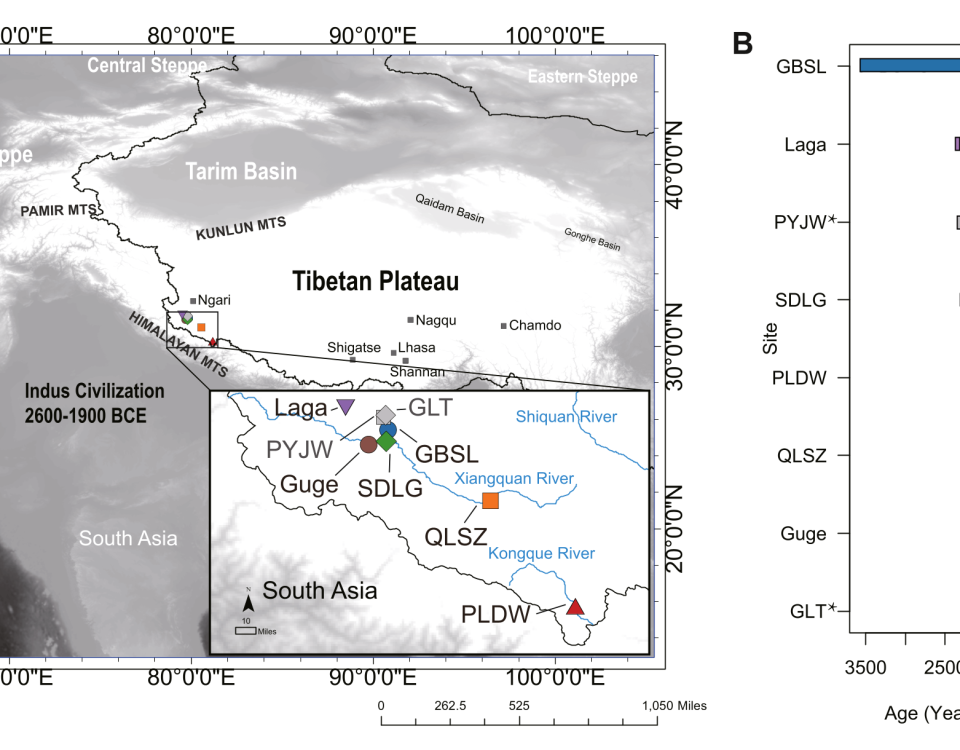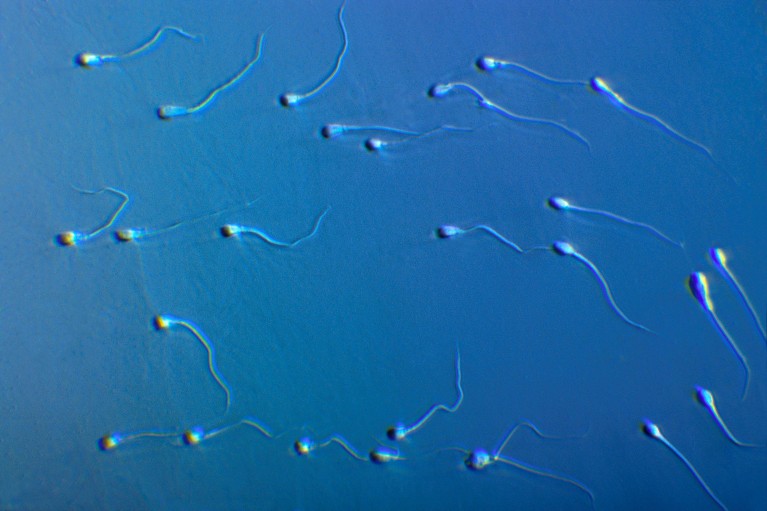
Long-Read Sequencing Sheds Light on Potential Links Between RNA Isoforms, Alzheimer’s Disease
2024年6月28日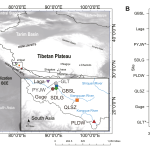
Ancient DNA Study Reveals Complex Interaction History Between Ancient Western Tibetans and External Populations
2024年7月23日Interpreting Major Scientific Questions of 2024 | “Are Ancient Humans Found in China Ancestors of Modern Chinese People?”
On July 2, the China Association for Science and Technology announced the 2024 major scientific questions (10 items), engineering challenges (10 items), and industrial technology issues (10 items). Proposed by the Institute of Vertebrate Paleontology and Paleoanthropology of the Chinese Academy of Sciences and recommended by the Paleontological Society of China, the forefront scientific question “Are ancient humans found in China the ancestors of modern Chinese people?” was selected.
The 2024 major issues and challenges collection emphasized frontier, innovation, and strategic aspects, receiving 597 questions and challenges recommended by 102 national academic societies, federations of societies, corporate science associations, and university science associations. These cover ten major fields: fundamental sciences in mathematics, physics, and chemistry; earth sciences; ecological environment; manufacturing technology; information technology; advanced materials; resources and energy; aerospace technology; agricultural technology; and health and life sciences. A group of academicians, experts, and international organizations participated in refining and recommending these issues and challenges, with 129 academicians and experts involved in the initial and final selection stages rigorously reviewing the selections.
“Are Ancient Humans Found in China Ancestors of Modern Chinese People?”
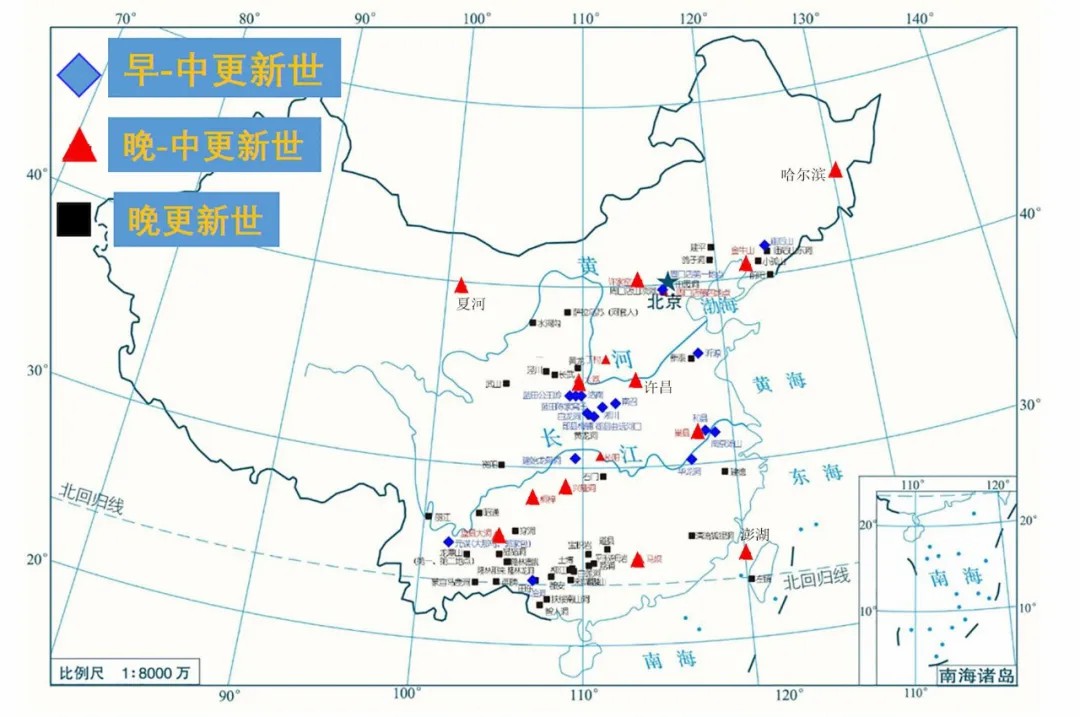
The question “Are the ancient humans found in China the ancestors of modern Chinese people?” is one of the most closely watched issues in both academic and media circles and remains an unresolved question in the study of human origins and evolution in the East Asia region. To date, Pleistocene human skulls, teeth, and postcranial fossils have been unearthed at nearly 80 sites across China. Existing fossil evidence indicates that humans have lived and evolved in East Asia from as early as 1.7 million years ago or even earlier. Research on Chinese ancient human fossils began in the early 1920s, with the most representative and influential being the discovery of the Peking Man fossils at Zhoukoudian in 1929. After 1949, Chinese paleoanthropology developed rapidly with the discovery of a large number of new sites and fossil materials. In the 21st century, new discoveries of human fossils at sites such as Tianyuan Cave, Chongzuo, Daoxian, Xuchang, Hualong Cave, Xiahe, Harbin, Yunxian, and others, along with related research progress, have increasingly attracted the attention of the international paleoanthropological community to the origins and evolution of humans in the East Asia region.
One of the proposers of this significant question, researcher Wu Xiujie from the Institute of Vertebrate Paleontology and Paleoanthropology, explained that the evidence discovered so far includes the earliest appearance of humans (transition from apes to humans), early human evolution, the origin and evolution of Homo erectus, the origin of modern humans, and the formation and spread of modern human populations. These studies form the frontier and hotspots of paleoanthropological research.
“The core scientific issues of ‘Are ancient humans found in China the ancestors of modern Chinese people?’ include identifying the earliest human populations in China, the relationship between Homo erectus and modern humans in China, whether there were different populations during the Middle to Late Pleistocene, their taxonomic status, the timing and migration paths of early modern humans, and the origins of modern Chinese populations,” elaborated researcher Fu Qiaomei from the Institute.
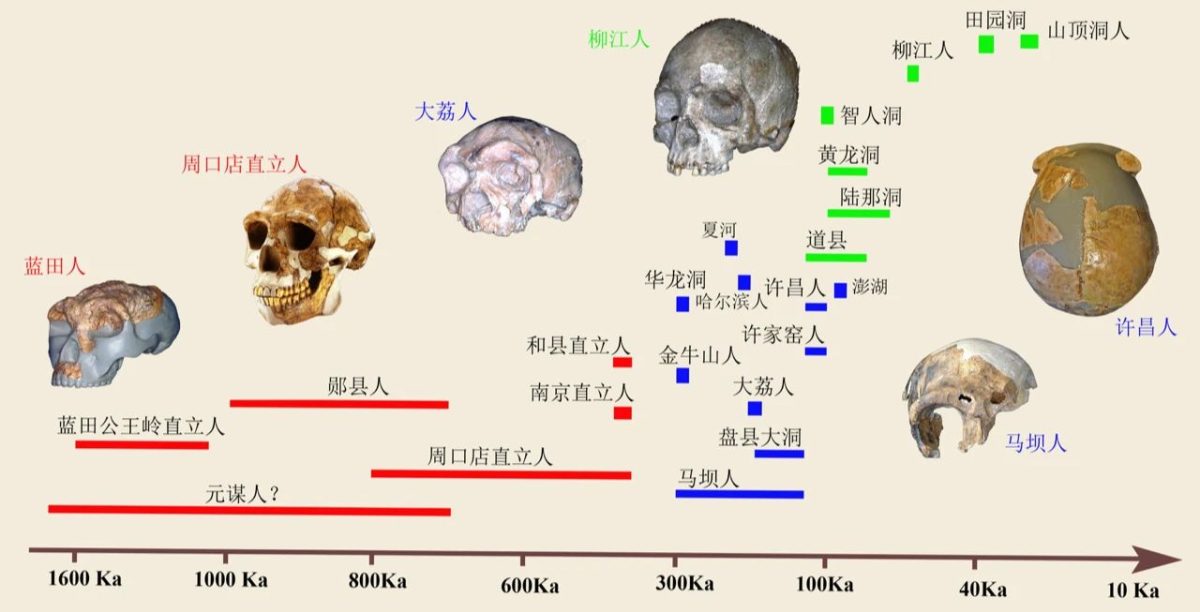
The Institute of Vertebrate Paleontology and Paleoanthropology and related research teams both in China and internationally continue to conduct in-depth research on this major scientific issue, using ancient human fossils and Holocene human remains from the East Asian mainland as the main research materials. Comprehensive research methods such as physical anthropology, genetic structure (ancient DNA, ancient proteins), and associated archaeological evidence are employed to systematically study the morphological characteristics, temporal changes, and regional variations of different fossil categories. This research analyzes and demonstrates whether there is continuity in chronology and morphology between East Asian ancient humans and modern Chinese populations, where modern Chinese populations originated from, and whether they are direct descendants of local ancient human types. Through this research, the evolution pattern of humans in the East Asian mainland is revealed, clarifying the evolutionary lineage of the Chinese people.
Academician Zhou Zhonghe of the Chinese Academy of Sciences noted that solving this problem has significant value in enriching the history of human evolution and exploring the origins and evolution of the Huaxia ethnic group. By scientifically elucidating the genetic exchanges, cultural collisions and integrations, and technological evolutions between East Asian populations and other world regions, this research contributes original insights to the study of the origins and evolution of world humanity and civilization.


